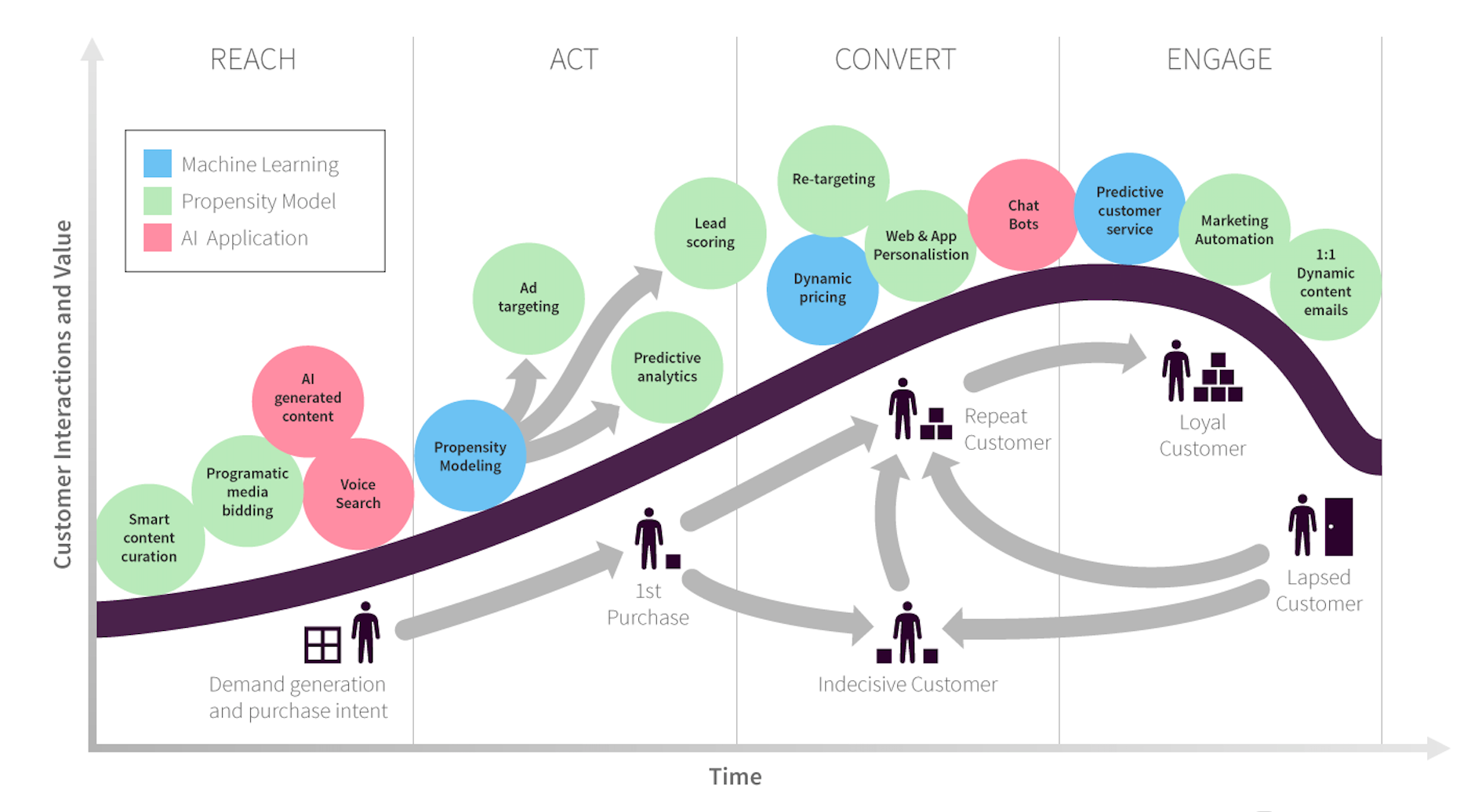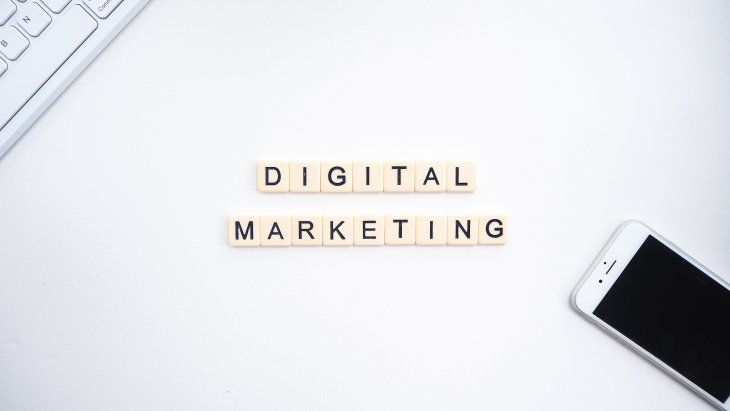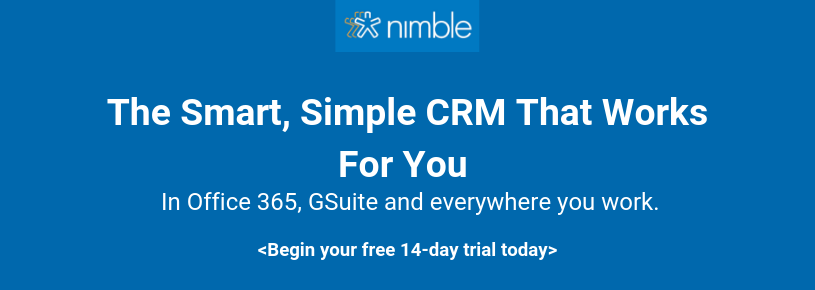Predictive analytics involves depending on big data platforms to spot trends and highlight aspects you would likely miss without technological help.
Here are five ways that predictive analytics in digital marketing could pay off.
Increasing What You Know About Your Customers
Digital marketers are continually challenged to offer the most relevant content to customers. If you fail to do that, people will likely scroll past social media content, not open emails, ignore banner ads, and so on. When predictive analytics has a customer-centric focus, you learn things that may have otherwise remained hidden.
For example, a predictive analytics tool can group customers based on things like their locations and buying patterns. Then, the platform might suggest what type of digital content would be most likely to cause people to buy things, address customers’ pain points, or entice them enough that they stay on a website for longer than usual.
“It’s exciting to see the many opportunities for applying predictive analytics from applying machine learning to historical customer interaction data,” says Dr. Dave Chaffey, co-founder of digital marketing learning platform Smart Insights. “Previously predictive analytics has mainly been limited to Business Intelligence teams in larger organizations applying stats to this data.
“Today, opportunities to improve relevance of communications and so boost response are available to all businesses, supported by new artificial intelligence tools for marketing, which can be deployed across the customer lifecycle as this visual shows. Personalization tools for recommending the next-best product, once reserved for larger online retail brands, are now available for E-commerce businesses of any size.”

“For me,” Chaffey says, “some of the standout practical predictive analytics tools can be used for CRM through email marketing. For example, Persado and Phrase enable email marketers to review historic responses to subject lines and creative and deliver creative that best fits the emotional triggers of an audience.”
Identifying Online Actions That Cause Future Offline Decisions
Predictive analytics is all about analyzing current or historical data to get a handle on which unknown events are most likely to happen. Experienced digital marketers know that online campaigns often support offline ones.
However, figuring out which kinds of online content trigger offline actions most frequently isn’t always straightforward. Predictive analytics can help.
In one case, a marketing company worked with U.S. Cellular to investigate which online content most often caused positive offline actions, such as in-store visits. Digging into the data showed that content about available offers was most valuable for generating such responses.
However, an instant chat feature and a part of the site that displayed a device gallery also encouraged people to come into stores.
The brand then branched out and centered its testing on enhancing online offers to drive in-store activity even more. This is a strong example of how predictive analytics in digital marketing can apply to offline marketing, too.
Fixing Email Frequency Issues
You are likely familiar with how difficult it is to determine how often to send emails. If they arrive in your customers’ inboxes too frequently, recipients will likely get fed up and decide they don’t want to open any of them. Conversely, if the emails come too sporadically, your company probably won’t be in a top-of-mind position for a potential buyer.
Hotel Chocolat, an upscale chocolate retailer, had that issue with emails sent during its holiday season campaigns. The brand hired a marketing company that utilized a frequency optimization tool. It tapped into behavioral analytics to decide which customers were most eager to see the emails and which were not. Based on that information, it automatically chose how frequently to send messages to certain groups.
The results showed that open rates went up by 15% and topped out at 57%. Also, even though the year-on-year email message quantities went down by 40% due to the campaign, the company’s revenue from the email channel went up by nearly 25%.

Outcomes like these make it clear why companies are so excited to implement predictive analytics into digital marketing campaigns. Also, the growth of predictive analytics ties into the larger trends of big data and artificial intelligence (AI) solutions. Research showed that 20% of organizations intended to roll out AI in 2019. AI hasn’t reached its peak yet, but predictive analytics spurs interest in that technology.
Improving Lead Scoring
If you didn’t have an effective lead scoring mechanism in place, it’d become far too easy to waste time delivering sales-based digital content to leads who aren’t ready to buy yet. You could make a mistake when judging who is prepared to purchase. Better lead scoring is another payoff marketers enjoy once they decide to implement predictive marketing.
A 2017 IDC white paper profiled how 66% of respondents planned to use AI-based sales and marketing lead scoring. Furthermore, 83% of organizations that had already adopted AI were using it for that purpose.
Bringing predictive analytics into lead scoring allows you to determine what kind of digital content is more appropriate for site visitors based on their position in the purchasing funnel. It also reduces the chances you’ll miss out on excellent opportunities.
Selecting the Most Appropriate Influencers
There was a time not long ago when it was sufficient for the top social media influencers to have massive follower counts. Now, digital marketers who choose to work with influencers are pickier. They look at other metrics to make well-informed decisions related to matching influencers with certain products, asking them to post on particular channels and more.
Predictive analytics takes much of the mystery out of the results achieved after hiring an influencer. For example, tools can confirm how an influencer performed over time and evaluate things like the quality of a post and the average number of engagements on each platform. They can also determine which age groups or audiences respond best to the influencer’s material.
You should not assume that an ultra-popular influencer is automatically the best choice for your upcoming digital campaign. Making a snap judgment like that without data to back it up could become a costly mistake. Relying on predictive analytics does not enable removing all sources of doubt that can arise when working with a new influencer. However, using predictive analytics can ease many of the worries that arise.
Predictive Analytics Can Help Remove Obstacles
“Many of the current applications of predictive analytics are mainly limited to retail and e-commerce,” Chaffey points out. “In future I think the tools will be opened up to businesses in more sectors. For example, within B2B marketing there are many opportunities to recommend next-best-content to nurture different personas based on historical analysis of content that has best supported lead nurture for different types of audiences.
“New tools will support what Gartner call conversation marketing through automated B2B chatbots that recommend the best content depending on disclosed profile data and inferred interaction data.”
Even the most skilled digital marketers know their industry has unexpected elements that can introduce issues into some campaigns and goals.
As the five examples above show, predictive analytics can help you be more responsive by letting you know what to expect. Prepare for the future by meeting or exceeding the expectations of your audiences.


